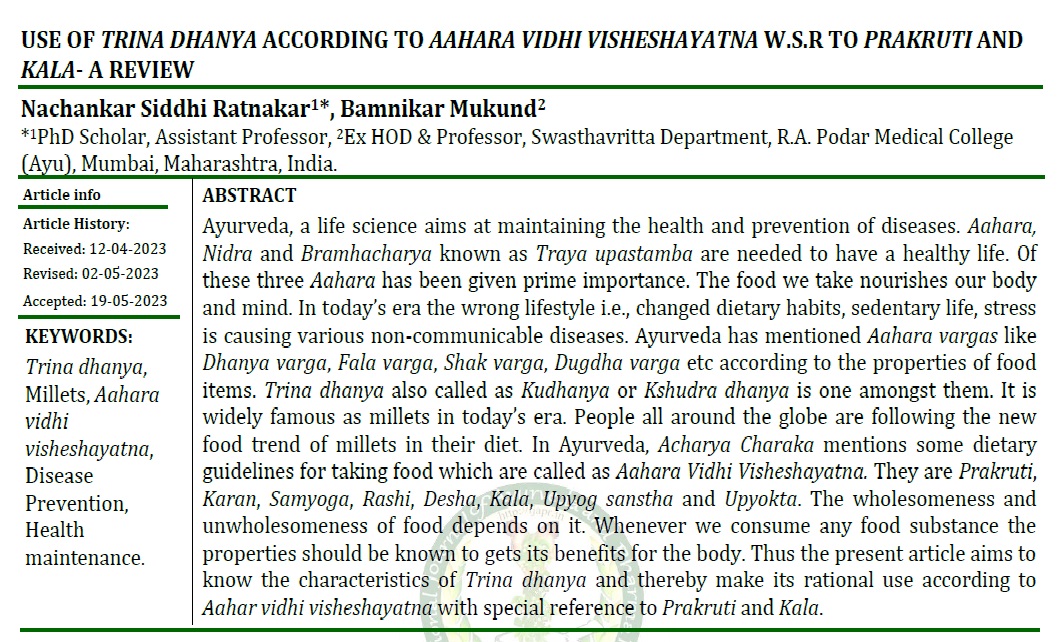Use of Trina Dhanya according to Aahara Vidhi Visheshayatna w.s.r to Prakruti and Kala
Abstract
Ayurveda, a life science aims at maintaining the health and prevention of diseases. Aahara, Nidra and Bramhacharya known as Traya upastamba are needed to have a healthy life. Of these three Aahara has been given prime importance. The food we take nourishes our body and mind. In today’s era the wrong lifestyle i.e., changed dietary habits, sedentary life, stress is causing various non-communicable diseases. Ayurveda has mentioned Aahara vargas like Dhanya varga, Fala varga, Shak varga, Dugdha varga etc according to the properties of food items. Trina dhanya also called as Kudhanya or Kshudra dhanya is one amongst them. It is widely famous as millets in today’s era. People all around the globe are following the new food trend of millets in their diet. In Ayurveda, Acharya Charaka mentions some dietary guidelines for taking food which are called as Aahara Vidhi Visheshayatna. They are Prakruti, Karan, Samyoga, Rashi, Desha, Kala, Upyog sanstha and Upyokta. The wholesomeness and unwholesomeness of food depends on it. Whenever we consume any food substance the properties should be known to gets its benefits for the body. Thus the present article aims to know the characteristics of Trina dhanya and thereby make its rational use according to Aahar vidhi visheshayatna with special reference to Prakruti and Kala.
Downloads

Copyright (c) 2023 International Journal of Ayurveda and Pharma Research

This work is licensed under a Creative Commons Attribution-NonCommercial-ShareAlike 4.0 International License.






